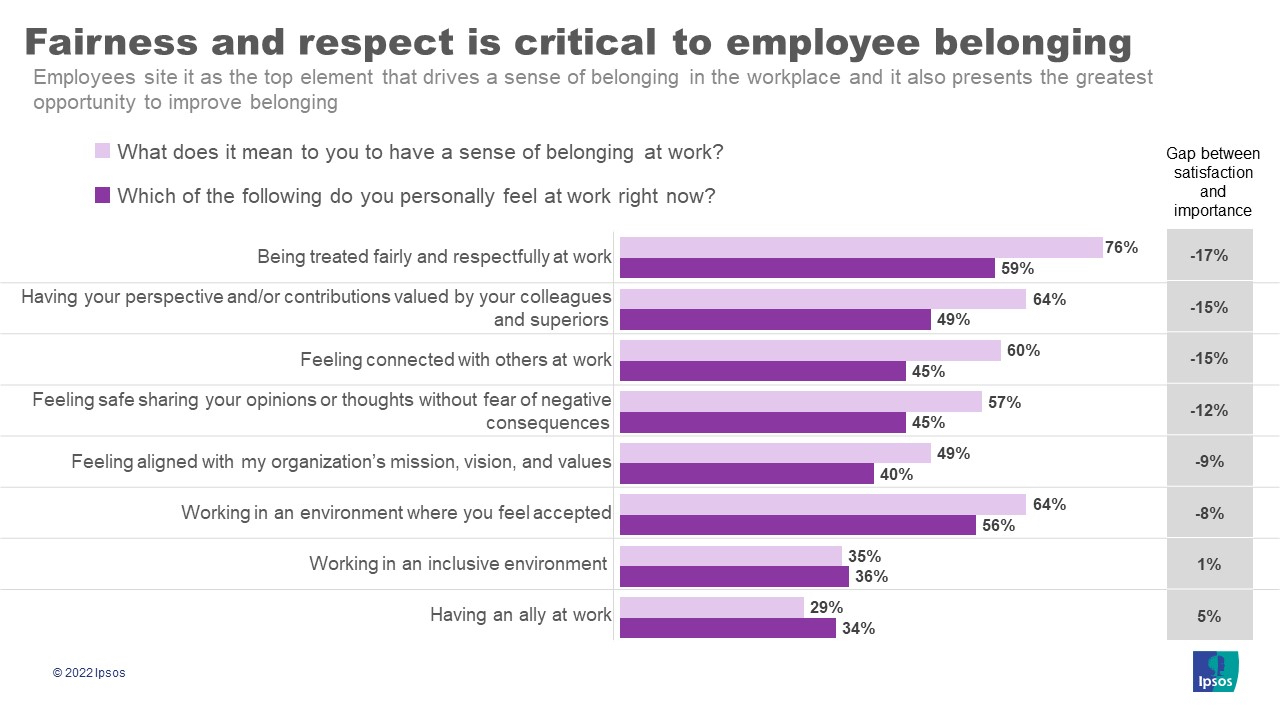With a growing focus on diversity, equity, and inclusion (DEI) as a critical workplace goal and productivity driver, leaders need to be ready to formulate and showcase their DEI initiatives, including how they recruit, in order to retain their talent, with their employees and stakeholders.
Last month, we celebrated Global Diversity Month, and honored Indigenous People on October 10. These major milestones provided an opportune time for leaders to reflect on how they show up as leaders and level up on their DEI workplace strategy where everyone is respected, valued, and accommodated regardless of their:
- Ethnicity
- Sexual orientation
- Gender identity
- Physical ability
- Religion
- Age
- Marital status
- Socioeconomic status
- National origin
- Veteran status
The increasing pressure on leaders to drive real change
There has been increasing pressure on leaders to ensure meaningful progress is made through their DEI strategies. But oftentimes, ethnic minorities are left out of this conversation. Although some historically minoritized communities have made progress in our workplaces, many are still excluded.
Leaders have much more work to do in order to build an environment where employees sense that their uniqueness is accepted and are able to socialize, communicate, and feel respected. This is especially crucial for remote workers who can feel isolated and detached from any office workers.

It’s one thing for leaders to say all the right things and another altogether to action what they said they will do. Centering diversity, equity, and inclusion, and doing it well, can lead to higher profits, more innovation and happier employees.
“There is nothing more dangerous than sincere ignorance and conscientious stupidity.” – Martin Luther King Jr.
Building an inclusive and equitable environment is a strategic asset that can accelerate growth, innovation, and performance. Here’s how DEI can grow your business on the economic front:
- Diverse teams enhance customer acquisition and revenue growth, and are more likely to solve problems and be innovative.
- Promoting equity provides opportunity for equal career growth, and encourages cognitive diversity in decision-making.
- Inclusion leads to conscious decision-making, promotes psychological safety, and a sense of belonging.
As leaders, there are a variety of ways DEI can enhance your work environment
The most important things you can do to improve diversity, equity, and inclusion within your workplace is to…
1. Get informed – educate yourself
Leaders can make progress on improving diversity, equity and inclusion in the workplace by learning from their employees’ lived experiences. Focusing on organizational culture invites diverse perspectives to the drawing table, resulting in a more innovative and competitive workplace.
Perspective taking, and learning about employees’ past experiences is imperative to DEI. Consider your employees’:
- Communication style.
- Cultural traditions, observations, and knowledge.
- Working style.
- Parental or familial status.
- Their views.
The only way to understand others and empathize with them is to invest time in reading, learning to gain knowledge, practicing active listening when you are engaged in a conversation, make the time to create meaningful connections with people that you normally wouldn’t and speaking out against inequality and racism. A few conversation starters to consider are:
- Growing up, what were your experiences like?
- In what way have your experiences shaped who you are today?
- If you could share anything about yourself that you wish people knew, what would it be?
- What challenges do you experience?
- To be a better ally to you, what is something people could do to help you?
“When we listen and celebrate what is both common and different, we become wiser, more inclusive, and better as an organization.” – Pat Wadors

2. Avoid language that perpetuates stereotypes
Unknowingly, there are times where words and terms are used that perpetuate stereotypes. To avoid this, leaders can defeat negative bias by countering it intentionally and exploring different origins of words. Try to understand why this language can be hurtful and avoid using any terms that you are not familiar with.
“Unconscious perceptions govern many of the most important decisions we make and have a profound effect on the lives of many people in many ways…. Unconscious patterns can play out in ways that are so subtle they are hard to spot.” — Howard Ross, Founder of Cook Ross Inc.
3. Employ for culture adds, not culture fits
Culture fit seeks employees that can fit the cultural mold of the organization, whereas culture adds seeks to diversify the team and hire talent with a new skill or perspective which can enable colleagues and the whole company to grow.
“Diversity: the art of thinking independently together.” – Malcolm Forbes.
According to the Harvard Business Review, diverse teams are 70% more likely to acquire new audiences than their less diverse competitors, leading to a more economic prosperity.
4. Cultivate inclusion and make it your focus point
To attract and retain talent, leaders must create an inclusive culture that embraces and celebrates its employees’ differences. Foster a culture of belonging and ask the leaders in your organization:
- Do employees believe their gender, sexual orientation, culture, ability or racial status are supported at work?
- Are there private and dedicated spaces for prayer and mindfulness?
- If the organization provides food for its employees, is any of it culturally inclusive?
Hiring for culture fit can be problematic as it may limit the growth of the company, and affect the diversity of the team, resulting in an unwelcoming environment which can lead to greater employee turnover.
“What most people mean by culture fit is hiring people they’d like to have a beer with.” – Patty McCord, Ex-Chief Talent Officer at Netflix.
When leaders are more transparent about their hiring process, salary benefits, advancement opportunities, and DEI strategies, they’re employees entrust the organization more, and feel a sense of commitment and a greater role in advancing the organization.
There are several ways that leaders can become more inclusive, including:
- Corporate Transparency: an example of this is Denmark, which publicly published a register of companies’ beneficial owners that can be viewed for free.
- Combat Discrimination: organizations should reveal their diversity data on the race and ethnicity of their employees.
- Promote Diversity, equity and Inclusion: Inclusive policies which provide equality and opportunity for all groups, should be pursued.
5. Support your employees. Better still, ask them how you can best do that
Instead of only being reactive to problems, which many leaders are, leaders need to start being proactive, and stop and listen to understand the needs of their employees. Asking questions can help remove barriers, improve morale, and reduce job-related stress:
- How do you feel about working here?
- What can we do to better support you?
- How can we help invest and advance your career?
“When we listen and celebrate what is both common and different, we become wiser, more inclusive, and better as an organization.” – Pat Wadors
6. Understand why and how the gender wage gap impacts different groups
The U.S. Bureau of Labor Statistics reported that women earn 82 cents for every dollar men earn. In the U.S., for every dollar white men earn, Native American women are paid $0.60.
During the Coronavirus pandemic, it was documented that three out of 10 Native American women were working on the frontlines as essential workers, yet the wide pay gap can cost a Native American woman up to $1 million over the course of a 40-year career.
In order to protect the most vulnerable, it is the role of the leader to ensure that all employees are paid fairly, equitably, and compensated. Equity in the workplace means that employees feel empowered to bring their unique, best selves.
“Everyone should have a right to equal access to employment and, when employed, should have equal pay and equal access to training and development.” – CIPD
ABOUT THE AUTHOR

Farah Sargeant is the Head of Brand at DEI & You Consulting
She is a Marketing PhD candidate and mentor to Manchester MSc and BA (Hons) creative/advertising students. She graduated with a BA(Hons) in Advertising Management & Brand Management and MSc in International Relations in the peak of the recession. In 2012, Farah set up her own Marketing Agency and since then, has worked with brands around the globe. In 2021, she was awarded ‘Highly Commended’ by Business Insider as North West’s (England) Best Marketing Professional of the year, and shortlisted again in 2022.
At DEI & You Consulting, she focuses on all aspects of brand management, digital marketing, and social media. She is passionate about design, exploring ideas, and developing new skills. As a millennial, she understands the value and importance of DEI.
Contact us today to learn more about our consulting services or our workshops: www.deiandyou.com
Redefining Activism: New Trends in Allyship for the Upcoming Years
Picture a chessboard. At its center, two pieces stand mirrored, symbolizing the strategic interplay of equity and inclusion, the key...
Navigating DEI in Tech: 4 Steps Towards Ethical Algorithms and Inclusive Data Privacy
In our fast-paced, technology-driven world, personal data has become a hot topic. Every click, every purchase, every post - they all...
Maximizing DEI Metrics: 5 Ways to Elevate Your DEI Strategy Through Data Collection
Four ascending bar graphs measuring the DEI metrics of your organization When diversity, equity, and inclusion (DEI) work is...
Redefining Activism: New Trends in Allyship for the Upcoming Years
Picture a chessboard. At its center, two pieces stand mirrored, symbolizing the strategic interplay of equity and inclusion, the key...









